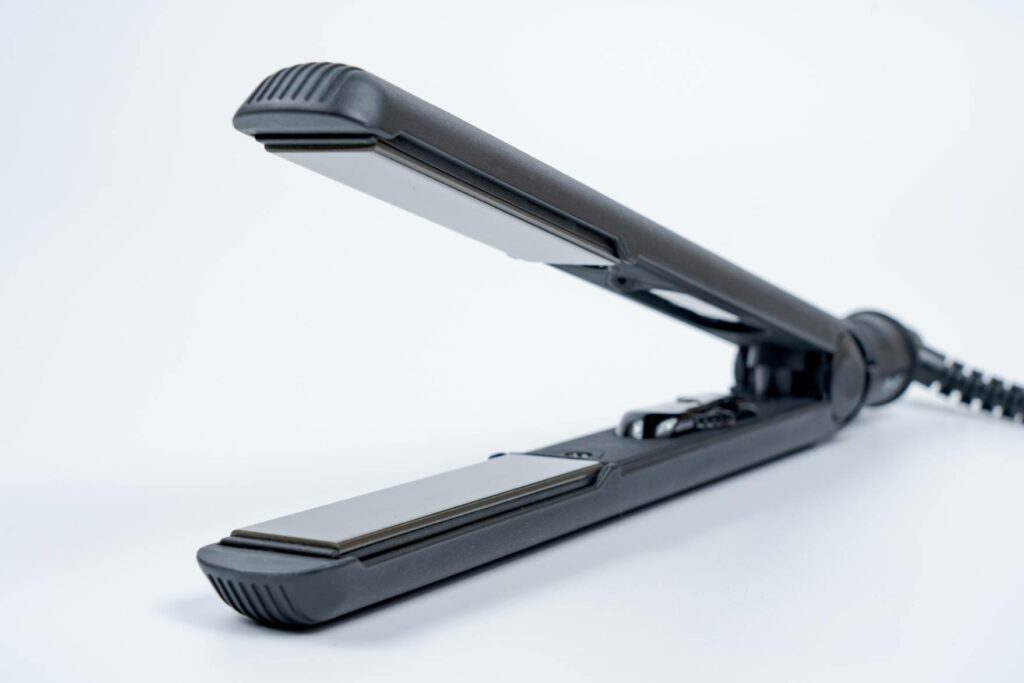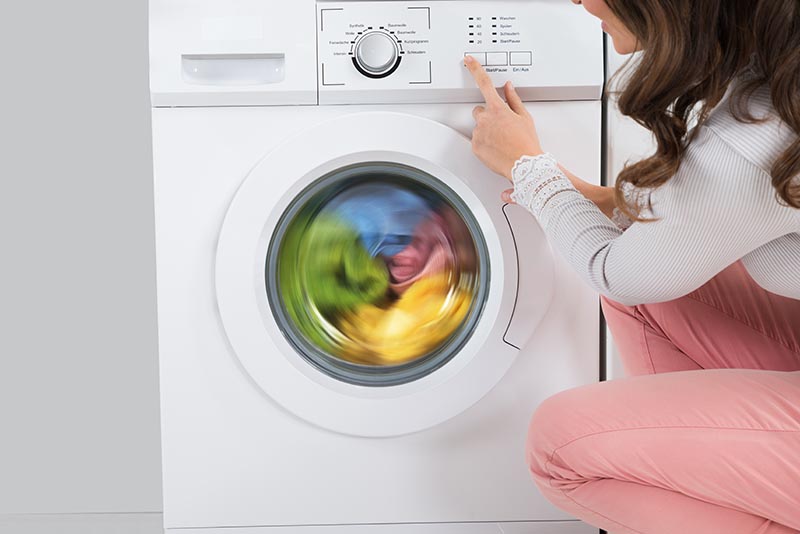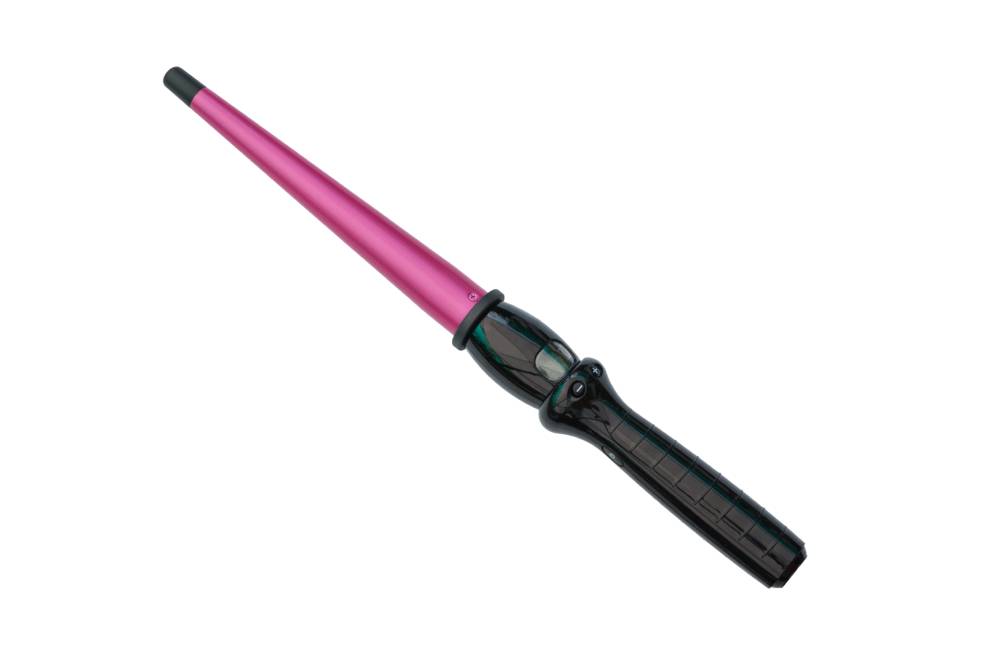What Is Perm Press on a Dryer? Pros, Cons, & FAQ
-
Kristin Hitchcock
- Last updated:

You’ve probably seen labels like “perm press” or “permanent press cycle” on your dryer. Usually, this button goes completely untouched as most don’t understand what it means. The name isn’t very straightforward or obvious, after all.
Simply put, this dryer cycle evolved from a type of fabric that used to exist. In the 1950s, people hated wrinkles. Therefore, a particular fabric was invented that was coated with a chemical that prevents wrinkles. People figured out that putting strong chemicals that made your clothes stiff next to your skin wasn’t the best idea.
However, this term stuck and was later used as a dryer setting. As you’d guess, this dryer setting is designed to reduce wrinkles as much as possible. It reduces the amount of ironing needed after the cycle.
Let’s look at how this setting works and when you may want to use it.
How Does It Work?
In a dryer, permanent press used medium heat to remove as many wrinkles as possible. Of course, precisely what counts as medium heat varies. Different dryers have different definitions, so you may want to check your manual if the exact temperature is crucial to you.
Usually, these cycles last about 30 to 40 minutes. In total, this makes the cycle slightly shorter and slightly cooler than usual. These two factors combined make the fabrics inside less likely to develop wrinkles and may limit the wrinkles that do develop. However, it does depend on the exact clothes.
Some very wrinkle-prone clothes may develop wrinkles anyway. However, trying this cycle out may still be worth the try.

When Should I Use Perm Press?
We recommend using this cycle on wrinkle-prone fabrics, such as synthetics. Often, these produce more wrinkles than other fabrics, so they tend to benefit the most from these cycles. These synthetic fibers include polyester, nylon, acrylic, rayon, and knitwear. Fabric made from synthetic and natural blends likely fall into this category, too.
Technically, you can use this cycle on just about any fabric. However, natural fibers are often more sensitive to heat. Therefore, more gentle cycles that have a lower temperature are often recommended. Otherwise, the permanent press cycle may damage them.
When Is Perm Press Most Effective?
Often, you won’t be able to use perm press on heavy-duty clothes effectively. These include things like jeans, sweaters, blankets, and towels. These items take longer to dry, so they often need a higher temperature. Furthermore, it can be difficult for dryers to dry these fabrics efficiently without more agitation. Otherwise, the middle tends to stay wet.
Therefore, we recommend using this cycle for more lightweight clothing that takes less to dry. Usually, this includes dress shirts, t-shirts, sweaters, scarves, socks, and bed sheets. These get dryer faster, which means that they are more likely to get dry during this cycle. Furthermore, they also tend to be created with synthetics and are prone to wrinkles.

The Benefits of Perm Press
There are several benefits of perm press. However, these all involve fewer wrinkles! Therefore, it is an excellent option for fabrics that are prone to wrinkles and require ironing. Of course, if you don’t iron those clothes, you probably won’t care about the permanent press cycle. However, for those clothes you iron, this cycle can save you time when used correctly.
Furthermore, this cycle can help prevent pills, those little balls of fabric that often occur on clothes. These balls of fabric are caused by leaving clothes in the dryer for too long. Therefore, the shorter cycle often leads to fewer of them.
The Downsides of Perm Press
With that said, the perm press won’t banish every wrinkle. You’ll still need to iron most clothes. However, the time spent ironing will be decreased. It isn’t a magic bullet, but it does help in many circumstances. Therefore, you will likely still need to iron.
Furthermore, this cycle doesn’t work for heavy-duty clothes, as we’ve previously stated. Therefore, you’ll likely need to put jeans and similar clothes on a regular cycle, which is hotter and longer than the permanent-press cycle.
Many fabrics may be damaged by the amount of heat produced during this cycle, as well. Therefore, you should carefully look at the clothes’ wash instructions. Otherwise, you may find that your clothes shrink more than you expected.

Frequently Asked Questions (FAQ)
Will perm press shrink clothes?
In actuality, the permanent press is cooler than the regular cycle. Therefore, it actually may limit shrinkage. However, it still produces a bit of heat, so it isn’t suitable for clothes that require very limited heat exposure. For instance, this cycle is still too hot for rayon.
Either way, this cycle is gentler than the regular cycle, despite the tough-sounding name.
Is perm press high heat on a dryer?
Compared to the normal cycle, perm press is cooler. Simply put, this cycle is shorter and cooler than the normal cycle, which can help reduce wrinkles (though it may leave your clothes somewhat damp). In many cases, this cycle would be described as “medium heat.”
Conclusion
The permanent press cycle on a dryer helps reduce wrinkles by lowering the temperature and time. Therefore, it works well for clothes that are prone to wrinkles. However, it will not completely remove wrinkles, so you should still plan on ironing if needed. It will simply limit the amount of time you spend ironing.
Furthermore, this cycle doesn’t work well for heavy clothes like jeans. These clothes take longer to dry and often require higher heat.
- https://www.whirlpool.com/blog/washers-and-dryers/what-is-permanent-press.html
- https://www.eastcoastappliance.com/blog/what-is-permanent-press-cycle
- https://www.apartmenttherapy.com/what-the-heck-is-permanent-press-anyway-washer-dryer-settings-explained-185501
- https://www.bobvila.com/articles/what-is-permanent-press/
Featured Image Credit: SViktoria, Shutterstock
Contents
